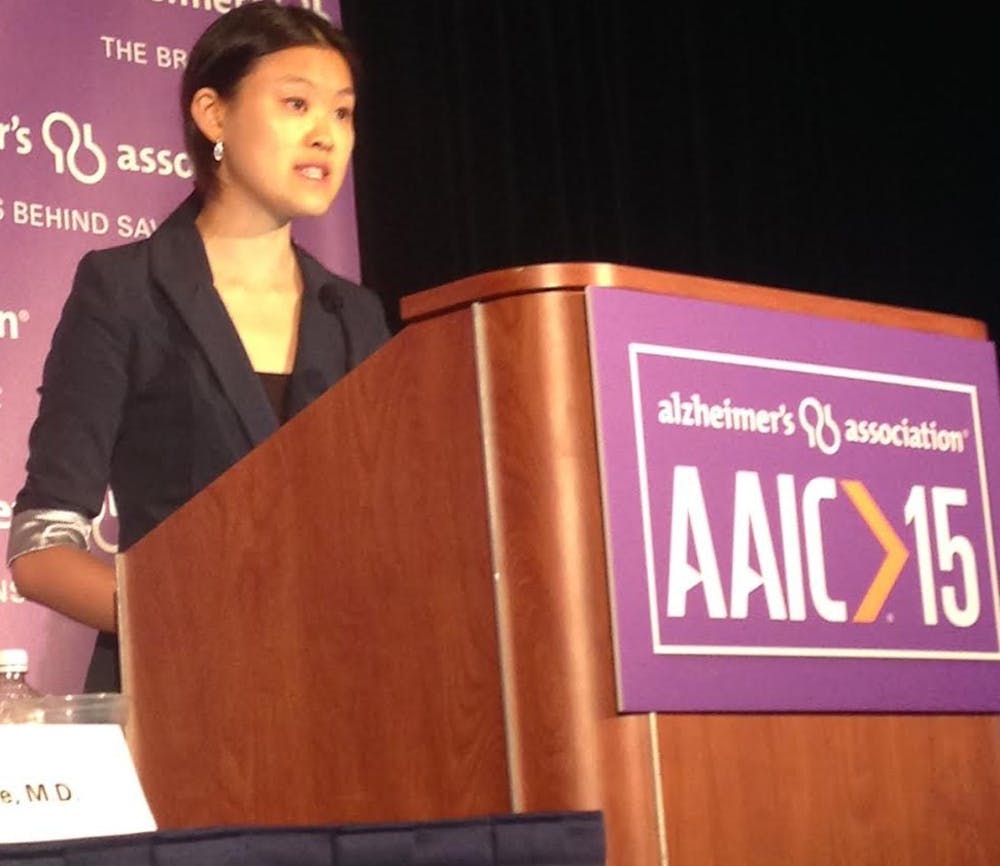A student Alzheimer’s Disease researcher is receiving national attention after publishing findings that show women decline in cognitive function at twice the rate of men.
Senior Katherine Lin presented her work at the Alzheimer’s Association International Conference in Washington July 18-23 alongside experts from around the world. Her findings shed light on gender differences in Alzheimer’s, a disease that afflicts an estimated 5.3 million Americans—almost two-thirds of whom are women.
“It seems to say that women at risk for Alzheimer’s might be having a different experience than men,” Lin said. “I would consider them still preliminary findings, but this is the longest follow-up that’s been done so far.”
After several members of her family were diagnosed with the disease, Lin, a Wrenn Clinical Research Scholar, began research last year with Murali Doraiswamy, a Duke professor of psychiatry and senior author of the study.
“Especially with our aging population, Alzheimer’s is becoming more and more of an exigent issue that needs attention,” she explained. “The more I read about Alzheimer’s, the more I wanted to be involved in this huge endeavor in some way.”
The study—which is part of the longitudinal Alzheimer’s Disease Neuroimaging Initiative project—looked at 398 subjects and analyzed data from up to eight years ago, concluding that women deteriorated twice as fast in both cognition and function. The subjects Lin studied were classified as having mild cognitive impairment (MCI), a condition that is often a precursor to developing Alzheimer’s, explained Doraiswamy in an email.
Data was gathered from two commonly used measures of Alzheimer’s or MCI in research—the ADAS test, a series of tasks that assess the subject’s memory, language and other cognitive abilities, and the Clinical Dementia Rating, which evaluated the subjects’ functional status in their daily lives.
Although the study could not conclude why such stark differences emerge between the genders’ cognitive deterioration, current theories in the field cite differing genetic vulnerabilities, lifestyle factors and hormone changes, among others. These remain speculative, however, Doraiswamy noted.
Lin also stressed the need for follow-up studies and future research into the reasons for women’s aster decline.
“I think and hope it generates more interest, and the good news is we can take this information and continue to uncover underlying mechanisms, treatment strategies, or possible lifestyle changes,” she said.
At the press conference in July, Lin presented the research to an audience of 270 reporters from leading newspaper and networks such as CBS News, The Washington Post and The New York Times. Doraiswamy said that among the many Alzheimer’s researchers there, Lin’s presentation was “one of the best.”
“Being at the conference was really inspiring for me. So much phenomenal research is being done and many questions are being asked from different domains like neuropsychology and epidemiology,” Lin said. “I was just excited to share something I’m really interested in.”
Lin plans to spend her senior year doing further research into Alzheimer’s and specifically studying differences in hippocampal volume. She is majoring in neuroscience and hopes to have a career as an academic physician.
The study’s co-authors also included Kingshuk Choudhury, Bharat Rathakrishnan, and Jeffrey Petrella.
Get The Chronicle straight to your inbox
Signup for our weekly newsletter. Cancel at any time.

